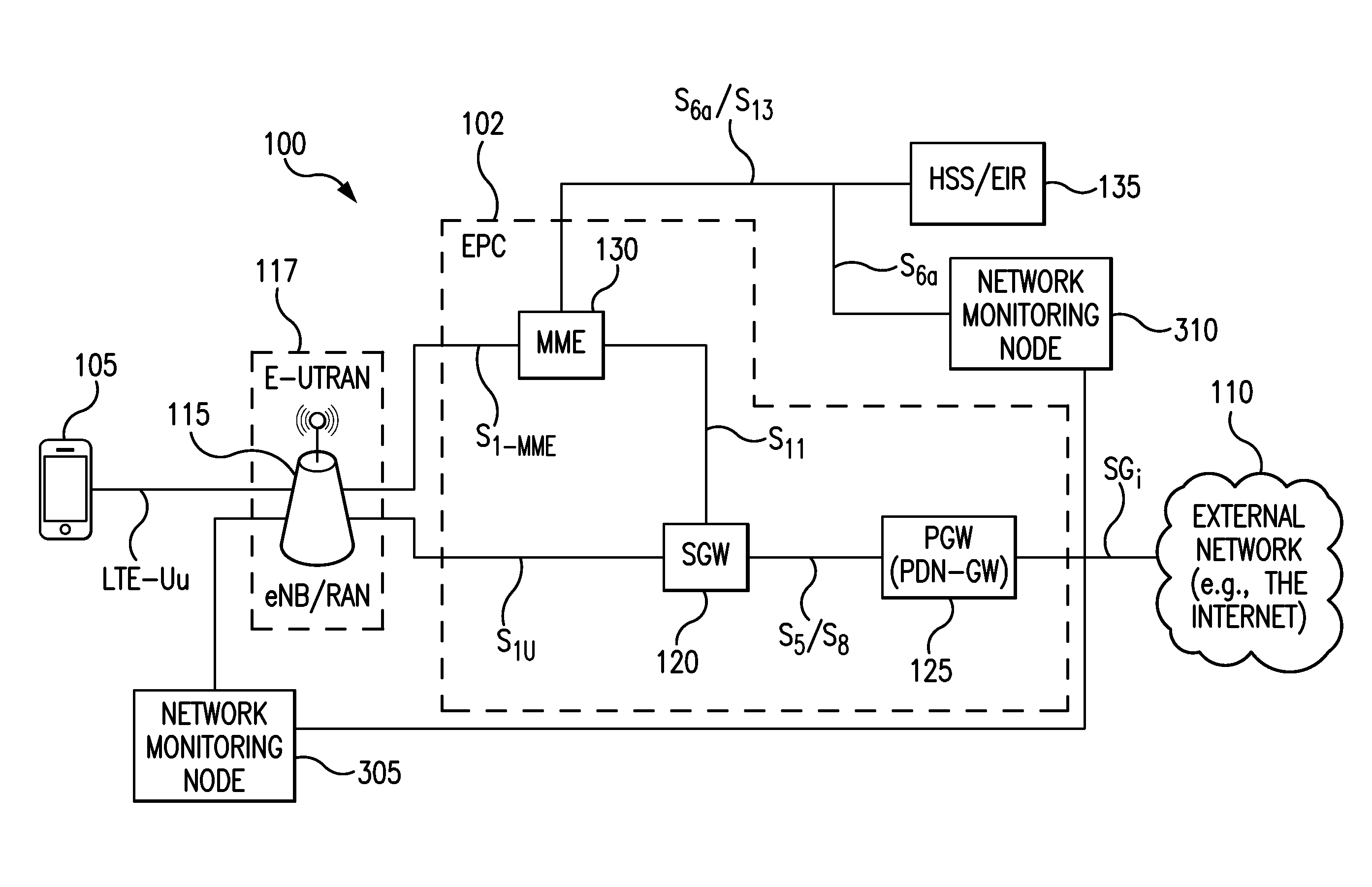Systems, methods and devices for deriving subscriber and device identifiers in a communication network
a communication network and subscriber technology, applied in the field of network analytics, can solve the problems of ue tracking, device analytics, network operators, and overall network analytics, and achieve the effect of facilitating network analytics
- Summary
- Abstract
- Description
- Claims
- Application Information
AI Technical Summary
Benefits of technology
Problems solved by technology
Method used
Image
Examples
Embodiment Construction
[0028]As discussed above, the 3rd Generation Partnership Project (3GPP) organization specifies the architecture for various mobile cellular networks. The latest mobile Long Term Evolution (LTE) network architecture defined by the 3GPP is called Evolved 3GPP Packet Switched Domain—also known as the Evolved Packet Core (EPC).
[0029]FIG. 1 is a diagram illustrating an LTE network architecture 100. The LTE network architecture 100 may be referred to as an Evolved Packet System (EPS) 100. The EPS 100 may include one or more user equipment (UE) 105, an Evolved UMTS Terrestrial Radio Access Network (E-UTRAN) 117, including one or more Evolved Node B(s) 115 (eNBs), an Evolved Packet Core (EPC) 102, a Home Subscriber Server (HSS) 135, and an External Network 110, (e.g., the Internet). As shown in FIG. 3, an S6a / S13 interface is preferably provided between HSS / EIR 135 and MME 130. It is noted that in an illustrated embodiment, the EIR functionality is expected to be built into the HSS.
[0030]EP...
PUM
 Login to View More
Login to View More Abstract
Description
Claims
Application Information
 Login to View More
Login to View More - R&D
- Intellectual Property
- Life Sciences
- Materials
- Tech Scout
- Unparalleled Data Quality
- Higher Quality Content
- 60% Fewer Hallucinations
Browse by: Latest US Patents, China's latest patents, Technical Efficacy Thesaurus, Application Domain, Technology Topic, Popular Technical Reports.
© 2025 PatSnap. All rights reserved.Legal|Privacy policy|Modern Slavery Act Transparency Statement|Sitemap|About US| Contact US: help@patsnap.com



